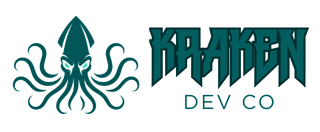
If your database had a brain, what would it look like? And if your brain ran like a database, how would it think? The answer to both lies in one concept: schema.
From cognitive science to SQL queries, schema is a universal structure that shapes how systems—biological and digital—understand, store, and process information. At Kraken Dev Co, we work with schema architecture every day. Whether we’re optimising an enterprise API or designing scalable backend infrastructure, understanding schema is the key to building systems that work.
Let’s break it down.
What Is a Schema?
A schema is a framework. It organises data, thoughts, or behaviour into something predictable. In psychology, schemas help us make sense of the world. In databases, they tell machines how to handle structured information.
Different domains, same principle: schemas impose order on chaos.
Schemas in Cognitive Psychology: Mental Architecture
In psychology, schemas are mental models formed through life experience. They’re how we recognise a dog, expect a queue in a shop, or mislabel a cow as a horse. These mental shortcuts are efficient but imperfect.
Two key processes govern schema development:
- Assimilation – integrating new information into existing frameworks.
- Accommodation – rebuilding those frameworks when new data doesn’t fit.
Types of cognitive schemas include:
- Person schemas: beliefs about other people.
- Self schemas: beliefs about ourselves.
- Social schemas: how we think we’re supposed to act.
- Event schemas: expectations about common scenarios (e.g. going to the dentist).
While they make thought faster, schemas also bring cognitive risk. Biases creep in. Assumptions take over. And over time, these frameworks become rigid—hard to change even when they’re wrong.
Schema Theory in Education: Learning by Connection
In classrooms, schema theory is the backbone of effective teaching. Students don’t learn in isolation—they connect new information to what they already know.
For example, a child who understands that apples fall can grasp the basics of gravity. That’s schema in action. But bad schemas (misconceptions) must be unlearned before accurate knowledge can be built. This is especially critical in subjects like science and maths.
The takeaway? Teaching isn’t just about new facts—it’s about reshaping existing frameworks.
Schema in Databases: Structural Intelligence
Shift from brains to databases, and schema takes on a different form: logic and structure.
A database schema defines how data is stored, accessed, and related. It’s the foundation of relational systems like PostgreSQL, MySQL, and Oracle. The schema is where we define:
- Tables: store rows of data.
- Columns (Attributes): define what kind of data each table holds.
- Primary keys: uniquely identify records.
- Foreign keys: connect data across tables.
There are three layers:
- Conceptual: high-level business rules.
- Logical: how data relates, abstracted from implementation.
- Physical: low-level details of storage and performance.
A clean schema isn’t academic—it’s operational. Poor structure means redundant data, slow queries, fragile integrations, and migration nightmares. At Kraken Dev Co, we design schemas with scale in mind from the start.
Schema Designs: Star, Snowflake, and Galaxy
In data warehousing, schema design isn’t one-size-fits-all. Here are three popular models:
Star Schema
A central fact table links to dimension tables. It’s flat, simple, and fast. Best for BI tools and analytics dashboards.
Snowflake Schema
Takes the star and normalises it. Less redundant, more complex. Useful for storage efficiency, but harder to query.
Galaxy Schema
Also known as a fact constellation. Multiple fact tables share dimensions. Great for enterprise-grade, multi-process analytics.
Choosing the right model is a performance decision. Our data engineers tailor schemas to the specific query patterns and access needs of your systems.
Schema in SQL: Containers for Objects
In SQL environments, a schema isn’t just a data structure—it’s also a namespace.
An SQL schema groups database objects like:
- Tables
- Views
- Stored procedures
- Functions
It provides:
- Logical separation
- Granular permission control
- Naming clarity
Schemas can be owned by users or roles, and access can be tightly managed at the schema level. This helps teams collaborate on the same database without stepping on each other’s toes.
Schema Markup for SEO: Structuring for Search
Switch to web development, and schema becomes a different beast: semantic markup.
Schema markup (via schema.org) is a type of microdata added to HTML to help search engines understand what your content represents. It’s a direct signal to crawlers about the meaning and purpose of a page.
Use cases include:
- Product listings
- Review snippets
- Events
- FAQs
- Recipes
- Articles
When implemented correctly, schema markup enables rich results—those enhanced listings with stars, dates, prices, or thumbnails. They improve click-through rates and clarify search intent.
Kraken Dev Co integrates schema into every build. Because visibility starts with structure.
API Schemas: Interface Contracts
For APIs, schema is contract.
An API schema defines:
- Endpoints
- Methods (GET, POST, PUT, etc.)
- Request parameters
- Response formats
- Error handling
Standards like OpenAPI or GraphQL SDL make this schema machine-readable—and developer-friendly. Benefits include:
- Auto-generated documentation
- Code generation (SDKs)
- Simplified testing
- Design-first development
With schema-first APIs, your interface is stable, predictable, and easier to maintain. This is why Kraken Dev Co defaults to schema-first when building integrations and services.
Schema Migrations: Managing Change Safely
All systems evolve. So must schemas.
Schema migration is the process of updating a data model without breaking the system. This could mean:
- Adding/removing columns or tables
- Renaming fields
- Normalising or denormalising
- Changing data types
Without version control, migrations are a risk. Done right, they preserve data, maintain uptime, and support continuous deployment.
At Kraken Dev Co, we automate schema changes using tools like Flyway, Liquibase, and Prisma. Every change is tracked. Every rollback is safe.
When Schemas Go Wrong
Schemas aren’t infallible. They fail in predictable ways.
In Cognition:
- Bias from rigid thinking.
- Misremembering facts to fit existing beliefs.
- Stereotyping.
In Data Systems:
- Redundancy from poor normalisation.
- Broken queries due to ambiguous joins.
- Difficult migrations from bad structure.
- Performance loss from over-complication.
One schema bug can ripple across the whole system. That’s why we stress clarity, naming discipline, and schema governance from day one.
Schema Architecture in the Enterprise
In large organisations, schema architecture becomes even more critical. There are two approaches:
One Database, Many Schemas
Used when teams or departments share infrastructure but need logical separation. Advantages:
- Centralised access control
- Easier integration
- Shared resources
Separate Databases per Schema
Used for strict isolation (e.g. security or region-based separation). This adds overhead but boosts control and compliance.
Both approaches have merit. Kraken Dev Co designs schema strategy based on scale, risk, and regulatory need.
Why Schema Quality Matters
Whether mental or mechanical, schema quality determines system performance.
High-Quality Schemas:
- Make learning easier
- Enable fast queries
- Reduce duplication
- Improve security
- Support clean migrations
Low-Quality Schemas:
- Confuse users
- Break features
- Block scalability
- Introduce risk
Think of schema as the foundation. If it’s off, nothing built on top will stand for long.
Final Thoughts: Start with the Schema
Schemas are more than definitions. They’re blueprints for cognition, communication, and computation.
Every user interaction, every table join, every API call—they all rely on schema. And the better your schema, the better your system.
At Kraken Dev Co, we architect for the future. Our teams live at the intersection of data, design, and performance—and schema sits at the centre.
Start with the schema. Everything else flows from there.



